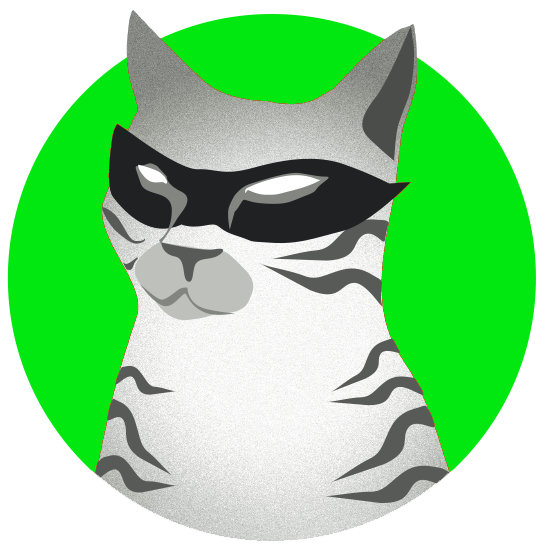In the summer of 2025, from the end of June until mid-September, I was Makery's Summer Chronicler-in-Residence for the Rewilding Cultures program, sharing my impressions from hacking camps and conferences across Europe.
And it was wild…
An island is more than a mere geographic formation—it is a metaphor, a symbol of possibility. As a fragment of land surrounded by water, the island embodies separation, self-sufficiency, resilience and reinvention. Disconnected from the mainland and its dominant systems, the island becomes a space where alternate realities can emerge—a laboratory of sorts for new values, aesthetics, and ways of living.
There’s something special about Île de Batz—a small island of around 450 inhabitants nestled in the Atlantic. At the beginning of the 17th century, the gradual silting of the island’s eastern areas prevented the cultivation of flax and hemp, both vital for the cloth industry. Seaweed then became the island’s primary resource until the 19th century. It was used for various purposes, including as cattle feed—cows grazed on species like Palmaria palmata—as well as for soil enrichment, and in the production of glass and soap. The trade extended beyond local use, with potash (a key ingredient in glassmaking) exported to other regions.
Just a day later, the landscape shifts from blue to green. With my shoes still full of sand, I lay down on the grass in front of Kerminy Castle in Rosporden, in the beautiful Cornouaille region of Brittany. A friendly orange cat is perusing the estate until it finally disappears into the thick forest surrounding it.
Kerminy is a self-managed space for experimentation, research, and creation, formed in 2020 by the artistic duo (n)— Dominique Leroy and Marina Pirot. Described as a “lieu d’agriculture en arts,” it occupies a former 14th-century seigneury, complete with a chapel, washhouse, outbuildings, and woods, nestled within a 12.5-hectare estate on the edge of a vast forest. It’s here that the ArtLabo Retreat shifts its focus to sound.
The first time I joined a summer camp, I was around nine years old. After one week of maladjustment among my peers, my unsupervised existence away from home ended in the back seat of my parents’ car—with Band-Aid-covered legs and two different shoes.
Since then, the only camp I’ve consistently returned to is the HomeMade camp in Switzerland. Organized by SGMK (Swiss Mechatronic Art Society), it takes place each year in a different location—from abandoned chocolate factories to remote castles—offering a unique DIY-or-die, off-the-grid atmosphere, filled with a constellation of people from all over the world.
“Hacker artists operate as culture hackers who manipulate existing techno-semiotic structures towards a different end, to get inside cultural systems on the net and make them do things they were never intended to do.”
Jenny Marketou, greek multidisciplinary artist, lecturer & author, in an interview with Cornelia Solfrank in 2000.
on/scenity by le ambigue at TTT 2025 in Ljubljana - Photo Chrysa Chouliara/kaascat
The Higgs boson didn’t go down in history as the world’s biggest entity, nor the simplest one. Instead, it earned its fame through its complexity. Sometimes, obscure fragments—when united—can shift our world more powerfully than one great, golden shitstorm. In today’s political climate, with the rise of raging fascism and mass ecocide, it’s no surprise that conferences like TTT exist. To paraphrase Newton: where there’s action, there’s an equal and opposite reaction.
Illustration by Chrysa Chouliara/Kaascat inspired by the text in Marrieta Radomska’s presentation
“A sense of grief becomes increasingly tangible in contexts where climate change and planetary environmental destruction transform certain habitats into unliveable spaces and induce socio-economic inequalities and shared more-than-human vulnerabilities. Although grief and bereavement linked to the loss of a human or of that which has already passed are societally accepted or even expected, the mourning of nonhuman death and ecological loss has a rather different status. It is often described as ‘disenfranchised grief’ (Doka 1989): not openly accepted or acknowledged in society. Simultaneously, death and loss can presently be understood as important environmental concerns. In many ways, they are entwined with mechanisms of environmental violence and the myriad of its manifestations.”
Extract from “Mourning the More-Than-Human: Somatechnics of Environmental Violence, Ethical Imaginaries, and Arts of Eco-Grief” by Marietta Radomska, Somatechnics, Volume 14, Issue 2, August 2024.
It’s hard to write about TTT—it’s more of a holistic experience than a conference in its format. With approximately 170 speakers from over 30 countries focusing on questions about the nature of the forbidden and the aesthetics of liminality, and on opening spaces for creative transformation in the merging of science and art, it was humanly impossible to attend everything. Personally, I wish I had the capacity to revisit it all with a Time Machine since I’ve never encountered such an intricate curation of exquisite subjects.
Fighting against precarious funding, burnout, and uneven access, the success of TTT lies in its ability to create safe yet provocative spaces. Each subject was approached in a transdisciplinary way, breaking away from the format of a traditional conference. Every topic found its place and was treated with respect. In short, TTT is an inclusive mosaic of contrasting experiences, where a global network of diverse practitioners builds long-term collaborations, solidarity, and resilience.
Last but not least many, many thanks to Ewen Chardronnet, Maya Minder, François Robin, Marc Dusseiller and everyone else who made these journeys special.

